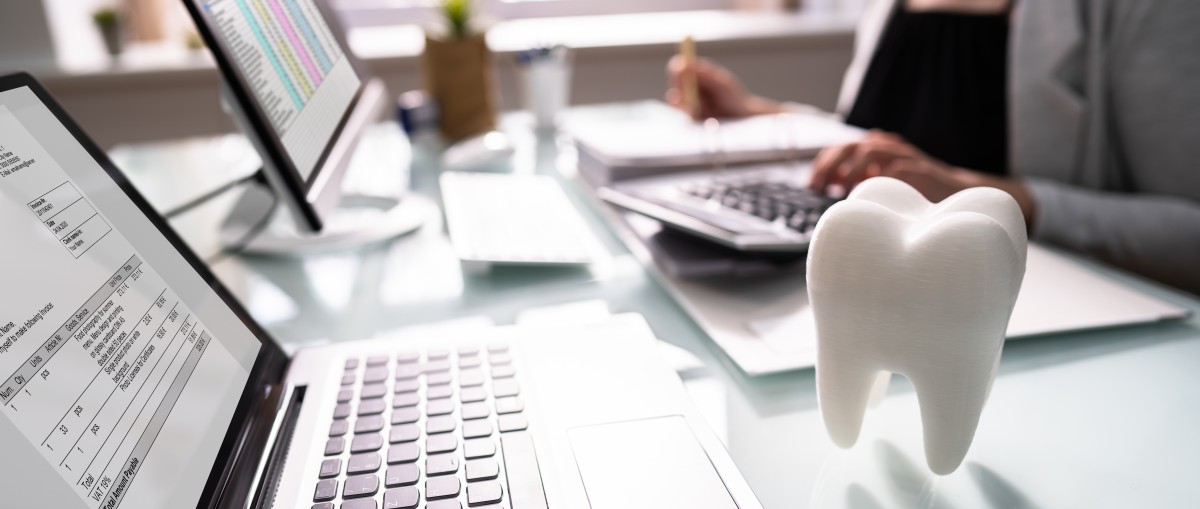Using Patient Education Videos to Support Preventive Care Strategies
As a healthcare provider, you know prevention saves lives. From routine screenings and lifestyle counseling to vaccinations and early detection,...
6 min read
Robert McDermott Apr 20, 2023 12:00:00 PM
 As a practice manager or practice owner, you’re managing, juggling, and prioritizing different tasks daily. However, one task that cannot be reprioritized or overlooked is the coding and billing process. It’s crucial to your patients getting the dental care and financial assistance they need. It’s equally crucial to your practice and cash flow. And yet, even with its importance, it remains one of the biggest challenges for your administrative staff. But does it have to be that way?
As a practice manager or practice owner, you’re managing, juggling, and prioritizing different tasks daily. However, one task that cannot be reprioritized or overlooked is the coding and billing process. It’s crucial to your patients getting the dental care and financial assistance they need. It’s equally crucial to your practice and cash flow. And yet, even with its importance, it remains one of the biggest challenges for your administrative staff. But does it have to be that way?
Trying to tackle CDT coding and ICD-10 medical cross-coding for dentistry, without the right resources can be overwhelming. Utilizing the assistance available to you and your staff is a smart move. Providing the right tools, like a coding assistant with predictive text, to your team can help them succeed and improve overall efficiency. They’ll be able to identify relevant codes more quickly. Still, like all things complex, coding takes time to master, which means the best place for many to start is with the basics.
Quick Links
Of all the administrative tasks in an office, many are important, but few are as important as ensuring accurate coding. And, as anyone who has worked in billing and coding will tell you, it’s not easy or fast. In fact, for many dental practices, it’s among the most confusing and frustrating tasks. And, because practice health relies on the steady flow of revenue, and revenue relies upon accurate coding, an already difficult process can become even more stressful.
While jumping into the deep end of a pool is, by some, seen as a great way to teach someone how to swim out of necessity, it’s also a good way to court disaster. That’s why starting with the basics is best. Understanding some of the foundational principles is the first step to mastering this essential process.
When it comes to dental coding, there are three coding methods you’ll likely need to know: Current Dental Terminology (CDT), Common Procedural Treatments (CPT), and ICD-10 codes which are used for cross-coding or medical coding for dental treatments.
Coding in both medicine and dentistry follows a pretty linear path. Insurance carriers are looking for specific information regarding why a certain procedure is needed (ICD-10) and what procedure was performed (CPT/CDT). These coding types are necessary if you’re submitting claims to medical rather than dental insurance, and certain diagnoses and procedures require that.
Let’s look a bit more closely at the types of codes you or your staff may encounter:
ICD-10 codes are diagnostic codes used to group and identify diseases, disorders and symptoms and inform the payer why the procedure was performed. ICD stands for International Classification of Diseases and 10 refers to the version, as in this is the 10th iteration of these codes, which is updated at least once a year. ICD-10 codes are made up of three to seven characters, each of which provides more detailed information about the diagnosis. All codes begin with an alpha character, indicating which chapter of the code covers the diagnosis. While the second and third characters are numbers, the fourth, fifth, sixth, and seventh may be either numbers or letters. The more characters, the more detailed the diagnosis.
CPT stands for Current Procedure Terminology. This code set is used to report medical procedures and services to payers and is kept up-to-date by the American Medical Association. If dentists perform medical procedures, they must report them with CPT codes and file them with medical insurance providers for payment.
CDT or Current Dental Terminology codes will be far more familiar to your staff. CDT is the HIPAA standard code set for dental diagnoses and procedures. There are 12 categories ranging from diagnostic to orthodontics, covering everything from preventative to restorative care and treatments.
This is where things can get hairy. Simply put, if you are filing a claim on the patient's medical insurance, every medical claim requires at least one ICD-10 code to be reported. If you don’t include one, your claim will be rejected.
 The Importance of Coding for Your Dental Practice
The Importance of Coding for Your Dental PracticeNo practice–no business–runs without collecting payment for services provided. When it comes to dental practices, payments come from two distinct sources: patients and insurance companies. Approximately 50% of a dental practice’s revenue comes from the latter and that means it’s essential to communicate clearly with insurance companies regarding what services and treatments they cover and what your practice provided to the patient.
Dentists, by virtue of their clinical education, experience and professional ethics, are the individuals responsible for diagnosis. As such, a dentist is also obligated to select the appropriate diagnosis code for patient records and claim submission. It is quite possible that additional associated codes may be appropriate for a given clinical scenario. In short, the dentist provides the diagnosis, but staff handles the coding and so ensuring that the codes match the diagnosis is key.
For example, a dentist uses an ICD-10 code to indicate a cracked tooth. Additional ICD-10 codes can then relay more detailed information related to that injury, such as pain, damage to the tooth itself, damage to the tissue, the cause of the injury, and more. ICD-10 codes are required on any claims for dental services submitted to medical benefit plans. ICD-10 codes may be used along with CDT codes on claims submitted to dental benefit plans when needed but are not required in those instances.
This combination of coding requirements, on top of an already complex process, means that there’s a high level of expertise needed by the individual who handles your dental billing and claims. Failure to accurately code for dental or medical billing and claims means not only that payment might be delayed or denied, but patients may be asked to pay more out of pocket, creating friction. Additionally, practices may be overpaid resulting in insurance companies coming to collect, in some cases, years later. In worst case scenarios, practices may be suspected of and investigated for insurance fraud and even embezzlement.
In short, the health of your dental practice and the dental health of your patients depends, largely, on accurate and timely coding procedures.
There’s quite a bit to know about dental coding, so as we said we’re going to, for now, stick to the basics and cover some of the most important aspects of coding for your dental practice.
Understand the difference between CDT, CPT, and ICD-10. When it comes to coding, coding correctly is paramount. That means knowing when a procedure falls into the cross-coding space and requires the use of ICD-10 or CPT medical code. This difference is an important factor in how procedures are covered by insurance and some insurers might have very specific coding requirements. For many, cross-coding isn’t intuitive which is why getting help in this area is vital.
Familiarize yourself with the most common coding errors. Preventing errors before they happen is key. That means knowing where to look for the most common coding errors such as: missing or inconsistent information, incorrect codes, and incorrectly bundled services. Fortunately, software like iCoreConnect’s iCoreCodeGenius can help you avoid errors by alerting you before you click submit.
Coding is a learning process. Having a dedicated person for dental coding and billing is essential because the more familiar a person becomes with the process and the codes, the better they get at it. While the ADA offers training, it takes time. If staffing issues keep you shuffling your coding staff, it may be time to consider getting some coding assistance. Providing your staff with the tools they need to succeed, and help your practice succeed, is vital. That’s why iCoreCodeGenius puts a coding assistant at your team’s fingertips.
Staying up-to-date is key. Regardless of the coding system, codes are updated twice a year (remember that ICD-10 indicates the most current version # of those codes). That means changes are frequent and staying on top of what’s changing and how that may impact your billing will help you avoid potentially costly errors. iCoreCodeGenius is cloud-based and automatically updated with the latest code changes. It can help ensure you’re getting the correct codes and getting your patients the coverage they need.
Communicate changes clearly with your team. Everyone should be on the same page when it comes to codes and procedures. That means clearly communicating what procedures are scheduled,what’s been completed and, most importantly, how to code accurately. Communication is key to coding.
Consider a yearly review. A yearly review gives you and your team a chance to identify pain points and how the process can be improved. Additionally, if you’re tracking practice analytics, you should be able to see where coding errors are costing you and, from there, you can adjust.
Understand the complete claims process. From form completion and submitting on your end through receipt of payment, it’s important to understand the claims process. This can help you identify areas that are tying up your resources and, ultimately, impacting your revenue cycle. More specifically, if you find you’re handling a lot of call backs or claim denials, it can indicate an ongoing problem with the coding and submission of your claims.
Ask for help when you need it. Ask any dental practice where they struggle and most will tell you, on the administrative side, the biggest challenge is coding and billing. Thankfully, there are options out there for help, including some that don’t require outsourcing. Rather than continuing to delay payments and jeopardize revenue and patient care, getting help with accurate dental and medical cross-coding is a much better option.
For many practices, the first solution to coding problems is to look to outsource. But, what if you brought dental coding expertise in, without adding new staff? From a team with healthcare experience who’s already bringing you improved workflows and efficiencies for your practice, consider getting coding support with iCoreCodeGenius.
iCoreCodeGenius helps you, quickly and efficiently, complete the ICD-10 coding you need to submit accurate claims and keep your revenue flowing, without adding to your headcount. If you’re ready to see it in action, book a demo today!

As a healthcare provider, you know prevention saves lives. From routine screenings and lifestyle counseling to vaccinations and early detection,...

There’s no denying that the AI boom is here. The American Medical Association reports that 66% of physicians are currently using artificial...

If only managing your practice’s revenue cycle came with a crystal ball. You could spot claim denials before they happen, predict when patients might...

There are several administrative aspects of running a dental or medical practice that, though they occur behind the scenes, a practice would grind to...

Few people seek out dental careers hoping for countless hours coding, talking to insurance companies to correct coding issues, or, in the worst...

There are few things that challenge modern healthcare on both the provider and patient side quite like managing insurance. Patients find their...